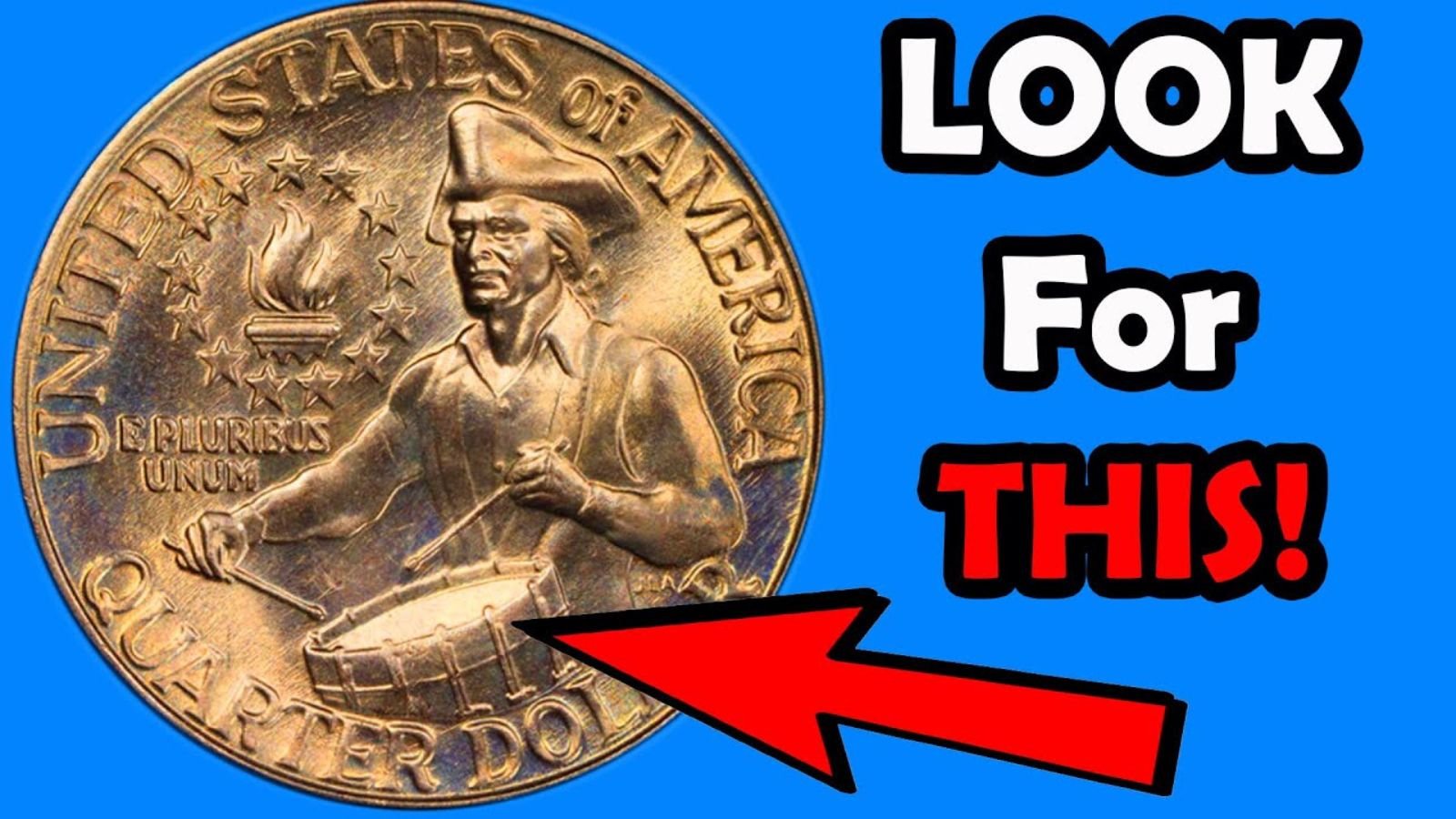Most people glance at coins and see only their face value. A quarter is a quarter, right? Not always. Some coins, especially older commemorative issues, carry far more value than their denomination suggests. One prime example is the 1976 Bicentennial Quarters.
These quarters, issued to celebrate the 200th anniversary of American independence, hold a unique place in U.S. coinage history. While millions were minted and many still circulate today, some rare types and conditions of these quarters have sold for hundreds—or even thousands—of dollars.
In this in-depth post, we’ll break down the story of 1976 Bicentennial Quarters, what makes them special, how to spot valuable ones, and why you might want to start checking your change a bit more carefully.
The Story Behind the 1976 Bicentennial Quarters
In 1976, the United States celebrated its 200th birthday. To mark the occasion, the U.S. Mint released special designs for three coins: the quarter, half dollar, and dollar. These coins, known as Bicentennial issues, all feature dual dates—“1776–1976”—and unique reverse designs commemorating American history.
The 1976 Bicentennial Quarters replaced the usual eagle reverse with a design featuring a Colonial drummer boy with a torch encircled by 13 stars, representing the original colonies. The obverse (front) still shows George Washington, but the date reads 1776–1976 instead of a single year.
Unlike other commemorative coins, these Bicentennial quarters were mass-produced and intended for everyday circulation, which is why so many people have seen or owned them.
Types of 1976 Bicentennial Quarters
There are a few distinct types of 1976 Bicentennial Quarters, and knowing the difference can be the key to identifying a valuable one:
1. Clad Circulation Strikes (Philadelphia & Denver)
These are the most common versions and were produced for everyday use. They were struck in a copper-nickel clad composition.
- No mint mark = Philadelphia
- “D” mint mark = Denver
🔹 Value: $0.25 to $2 depending on condition. Uncirculated examples or those in mint sets may fetch slightly more.
2. Clad Proof Strikes (San Francisco)
These were made for collectors and feature a shiny, mirror-like finish.
- “S” mint mark = San Francisco
- Clad composition, not silver
🔹 Value: $1 to $5 depending on grade.
3. 40% Silver Uncirculated Strikes
Struck specifically for collectors, these coins were sold in special Mint sets. They are made of 40% silver and can be identified by their slightly different color and weight.
- “S” mint mark
- Sold in red envelopes or blue uncirculated sets
🔹 Value: $5 to $15+ in average uncirculated condition. Higher grades command more.
4. 40% Silver Proof Strikes
Also minted in San Francisco, these are premium versions with a deep cameo effect (shiny design, frosted background).
🔹 Value: $10 to $25+ depending on condition.
Rarest and Most Valuable 1976 Bicentennial Quarters
While millions of 1976 Bicentennial Quarters exist, there are rare examples that are worth far more due to errors, condition, or special minting characteristics. Here are some of the most valuable types:
1. Doubled Die Obverse (DDO)
Some 1976 quarters were struck with a doubled image on the front. This can be seen on letters like “LIBERTY” or “IN GOD WE TRUST.”
🔹 Value: $500 to $3,000 depending on condition.
2. Off-Center Strikes
When a coin is misaligned during minting, it creates a partial image that collectors love. The more off-center, the higher the value.
🔹 Value: $100 to $800 depending on severity and completeness.
3. Full Drum Lines
On the drummer’s drum, well-struck quarters will show complete vertical and horizontal lines. These are considered “Full Drum Lines” and are often worth more to collectors.
🔹 Value: $30 to $100+ in uncirculated condition.
4. Ultra-High Grade Coins (MS67–MS70)
Most 1976 Bicentennial Quarters were poorly stored or circulated heavily. Those that survive in pristine condition, especially graded MS67 and above by PCGS or NGC, can fetch a premium.
🔹 Value: $300 to $5,000+, depending on the coin and auction.
How to Spot a Rare 1976 Bicentennial Quarter
Want to know if you’ve struck gold (or silver) with your 1976 Bicentennial Quarters? Look for the following signs:
- Check for “S” mint mark: Could be silver.
- Unusual weight: Silver versions weigh 5.75g, clad weigh 5.67g.
- Mirror-like shine: Might be a proof.
- Doubled letters or numbers: Possible doubled die error.
- Striking quality: Look at the drum and torch—crisp detail means potential value.
If you believe your coin is rare or in mint condition, consider having it professionally graded.
Collectibility and Historical Significance
The 1976 Bicentennial Quarters are not just collectibles—they are historical tokens. They represent a celebration of America’s foundation and remain the only quarters with dual dates in U.S. history.
This makes them especially appealing to both new and seasoned collectors. Even if your quarter isn’t rare or valuable, it’s still a unique coin worth holding onto.
Selling and Storing Your 1976 Bicentennial Quarters
If you believe you have a valuable 1976 Bicentennial Quarter, consider the following:
- Grading: A certified grade from PCGS or NGC can dramatically increase market value.
- Storage: Use non-PVC flips or capsules to prevent damage.
- Selling Options: Try coin shows, eBay, collector forums, or reputable coin dealers.
Don’t clean your coins! It may reduce their value. Let them show their natural age and tone—collectors prefer originality.
Common Myths About 1976 Bicentennial Quarters
Let’s bust a few myths:
- ❌ “Every 1976 quarter is worth hundreds.” – Only rare types or mint condition coins fetch big money.
- ❌ “All S mint marks are silver.” – Many are clad proof coins.
- ❌ “Old coins always mean high value.” – Age alone doesn’t determine value. Condition and rarity do.
Why People Love 1976 Bicentennial Quarters
- 🏛 Historical Value – Tied to America’s 200th birthday.
- 💎 Unique Design – Only quarter with a Colonial drummer.
- 💰 Affordable Entry Point – Collectible without costing a fortune.
- 🔍 Treasure Hunt Fun – You never know what you’ll find in change.
Final Thoughts
The 1976 Bicentennial Quarters are more than just pocket change. They’re a tribute to American history and a potential source of surprise value. Whether you’re a casual coin hunter or a serious numismatist, these coins deserve your attention.
Next time you’re sorting through spare change, keep an eye out for that dual-dated 1776–1976 quarter. It could be worth far more than 25 cents.
Some Important Link
| Telegram Group | Click Here |
| WhatsApp Group | Click Here |
| Home Page | Click Here |










